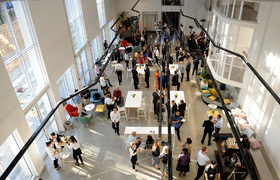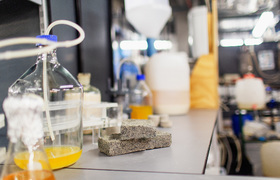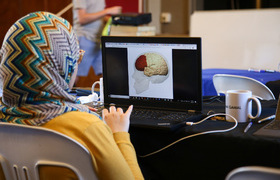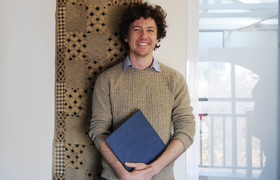Epilepsy in SA investigated through unique collaboration
01 October 2021 | Story Nobhongo Gxolo. Photo Neuroscience Institute. Read time 9 min.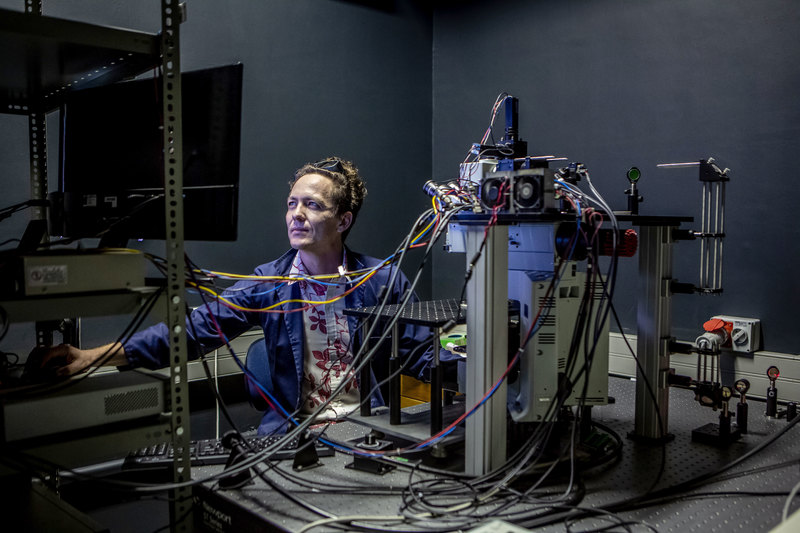
Over 50 million people worldwide live with epilepsy, a neurological disorder that arises from malfunctioning brain networks that result in seizures. Emerging researcher Dr Joseph Raimondo, a senior lecturer in the Department of Human Biology at the University of Cape Town (UCT), is investigating this disorder through his recently awarded Wellcome Trust International Intermediate Fellowship.
Due to seizure-causing brain infections – some of which can be attributed to tapeworm larvae – epilepsy figures in the country are higher than the global average, with one in every 100 people affected with the disorder, according to Epilepsy South Africa. Neurocysticercosis, a preventable parasitic infection that affects the brain, is caused by pig tapeworm larvae. It is one of the most common causes of adult-acquired epilepsy worldwide. The spread of this larva can be particularly problematic in areas where communities’ habitats are near the pigs they farm.
Dr Raimondo, a member of the Neuroscience Institute (NI) at the Faculty of Health Sciences (FHS), parallels epilepsy and cancer, saying: “It’s a disorder which arises from the necessary function of our bodies. Our bodies need to grow by making new cells; but when cells replicate uncontrollably, we get cancer. Similarly with epilepsy, our brain cells need to communicate with each other and lay down memories; when this process goes awry, we get seizures.
“There are lots of different causes of seizures and epilepsy. If someone is diagnosed with epilepsy, we must find out why, to offer the best treatment to get those seizures under control.”
A deep dive into the human brain
Through a new, ethically approved experimental system that makes use of otherwise discarded human brain tissue from brain surgery operations, the research will be combined with some of the latest techniques in neuroscience to explore how neurocysticercosis affects the brain.
“This is a unique collaboration which the NI enables between my team and local neurosurgeons like Anthony Figaji [a professor based at the Red Cross War Memorial Children’s Hospital, whose research work in the NI focuses on paediatric neurosurgery and brain disorders relevant to the South African context]. Through his work he has allowed rare access to human brain tissue removed during surgical treatment for epilepsy,” said Raimondo, who is also a member of the Institute of Infectious Disease and Molecular Medicine, based at FHS.
The epilepsy-causing larvae can’t be studied in any kind of detail in live humans, and animal models don’t always work well in simulating what’s going on in the human body. Raimondo does use animal models when applicable in some of his epilepsy research; but in this type of study, they would not be ideal.
“We’re getting the tapeworm that infects humans by harvesting them from pigs. We’re getting human brain tissue from people having surgery to treat epilepsy or other disorders – the tissue is normally discarded once removed, and instead can now help contribute to understanding how to manage brain conditions in the future. We can then treat the brain tissue with the tapeworm larvae and see what they do to the brain. This is all made possible by this important collaboration.”
The researchers are investigating three aims:
- determining how tapeworm larvae affect inflammation and cell death
- exploring how these larvae affect networks of nerve cells to cause seizures
- using powerful new genetic techniques to measure changes in the expression of genes in individual brain cells following exposure to these larvae.
The combination of these investigations will result in substantial gains in the study of inflammation, nerve cell networks and genes in the human brain. Through the grant, Raimondo will pursue his dual passions for investigating the basic mechanisms of how the brain works, while growing the understanding of a condition that affects the health of South Africans – ultimately to help improve their quality of life.
For Raimondo there are two levels at which this work is important. Firstly, it will help to grow basic neuroscience research capacity, through training students and establishing specialised technology for new ways to study brain cells, using complex techniques which will be applicable to any locally relevant neuroscience topic.
“Through the research we’re hoping to understand more about how to treat epilepsy following tapeworm infection.”
“Secondly, through the research we’re hoping to understand more about how to treat epilepsy following tapeworm infection. While using the information, we get to design better treatments for epilepsy more generally.”
Raimondo’s lab works with high-tech equipment: patch clamp electrophysiology, with little robotic arms that precisely control glass electrodes to record their electrical signalling and observe how brain cells talk to each other. In addition, there are powerful microscopes, which magnify the view of individual brain cells so their activity can be observed.
“It’s a unique opportunity that couldn’t be done anywhere else. You have to have sophisticated neurosurgery, where you can get the brain samples; access to rural areas, where close proximity to pigs can increase the chances of exposure to infection; and people who care about a disorder that doesn’t really occur in the Global North, and who have the expertise to study it at a very detailed level,” Raimondo said.
Third time’s the charm
This year, global economic pressure due to COVID-19 led to the United Kingdom (UK) Research and Innovation funder reducing available financing to assist projects funded through grants and contracts under the UK’s Official Development Assistance. During this time, Raimondo was busy with the tail-end of his work as part of the 2019cohort of Future Leaders – African Independent Research (FLAIR) Fellows.
“It was awesome to get the funding in the first place. It was cool to feel like we could do the science at a level that competes with the better-resourced Global North, and to do research for Africa and the world that’s leading-edge. That’s what FLAIR’s about, and it was exciting and motivating.”
The closure of the funding tap meant that the three-year project extension, which had been on the cards thanks to Raimondo’s FLAIR grant, was cut off prematurely. His research team was two years into doing the work; and things were just taking off when the COVID-19 pandemic hit, curtailing their efforts.
“We’d started setting up some really cool techniques, started recruiting some really good people, and started doing good work; and it was just all going to end.”
Around the same time, Raimondo had submitted another funding application, to the UK Medical Research Council African Research Leader Scheme. He’d made it as far as the final round of interviews before the scheme’s funding was also cut.
“It was all very terrifying … It’s a difficult time for researchers everywhere, especially those in South Africa who rely on foreign funding,” he said. This is mostly because the levels of local funding are relatively small; it’s often the grants from overseas that bring in enough capital and resources to be able to do impactful work.
“I’m relieved that the Wellcome Trust came through … Really grateful to get another big grant, which means we can look ahead and plan really ambitious experiments. And I get to keep great people in my lab, which is always the key – that’s a major benefit and allows us to do some awesome science.”
The domino effect of collaboration
Securing this type of funding and getting the work off the ground is a complex, multi-layered process, with different roles involved at various stages.
Raimondo gives a hat-tip to the structures and core facilities that UCT and the faculty have in place that allow for the acquisition of competitive awards such as this one. He feels that the faculty’s Research Animal Facility and the Confocal Microscopy Unit don’t get enough recognition, given the importance of their work. For him, securing the grant simply wouldn’t have been possible without these services.
He acknowledges the faculty’s finance officer, Portia Allen, who keeps his lab’s research show on the road through necessary but burdensome financial administration. He adds that each piece of preliminary data in the grant application he submitted was generated by different people in his lab, from postdocs (especially Dr Anja de Lange) all the way to master’s and honours students.
“There are a huge number of people doing a lot of work, that have gotten us to this point … like laboratory assistant Abdul Samuels, also known as a magician with mice.” Samuels applies his expertise to ensure that laboratory work with animals is conducted in accordance with the highest ethical and care standards.
“It’s a huge amount of work – and the people who support us in doing this are amazing,” said Raimondo.
 This work is licensed under a Creative Commons Attribution-NoDerivatives 4.0 International License.
This work is licensed under a Creative Commons Attribution-NoDerivatives 4.0 International License.
Please view the republishing articles page for more information.







